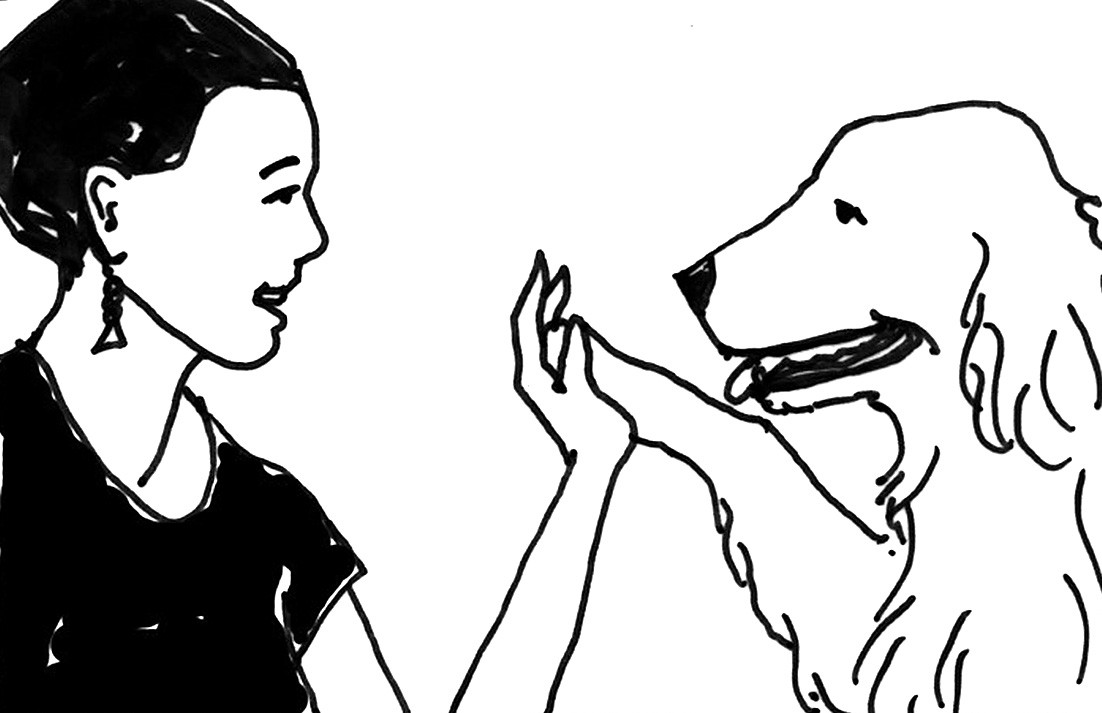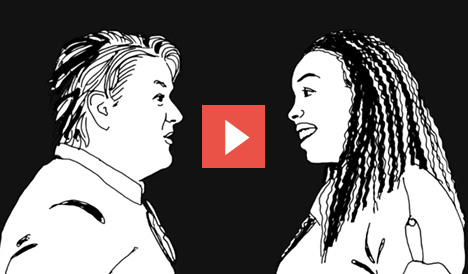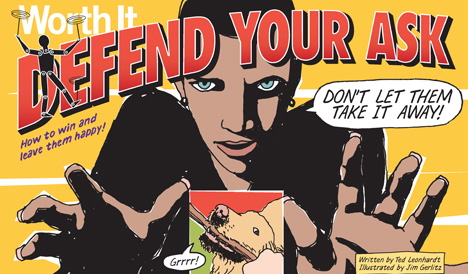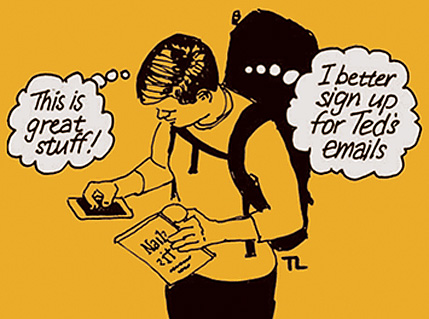How to Change the Context: A Guide to Winning Contracts

The designer’s task is to create brands that connect with people. We often forget that fundamental responsibility when we’re in the thick of things. As I gained more experience, I became more comfortable connecting with my clients about the possibilities for their projects — and, in turn, helping them connect with their clients and consumers. I call this technique “changing the context.” Here’s an example of how exactly I changed the context with one of my clients.
There I was, one of three finalists for a redo of a private label pet food for a family-owned chain. Making it to the finals was an achievement in itself, but now the real competition was beginning.
Researching the Client and the Competition
I checked out my competitors online. Their work sent shivers up my spine. One focused on store brands, the other had done beautiful work in the pet space.
The good news was that I’d developed a phone relationship with the prospective client. She was the marketing director, and her parents had founded the business. She said our firm was in the running because we seemed to understand how to connect to people, something she had read about in various publications. I called, thanked her for including us in the finals, and asked for an appointment to interview her, the CEO, and CFO.
This company was a successful regional player with twenty stores in affluent neighborhoods. The family set the highest standards for everything they sold: their advisory board included local veterinarians, and the company’s private label dog and cat food was specially formulated to meet standards set by these vets.
While they had done well in neighborhood stores, they were not attracting new customers. They felt lower pricing, offered by the larger chains, had capped their growth. Their stores were jammed with quality pet paraphernalia but had overwhelming clutter. The design of their pet food packaging was just as cluttered as the stores.
On the flight, thinking about her company’s position in the marketplace, I got an idea. She’d told me her company had a hard time gaining brand recognition. She’d said, “My brothers, the CEO and CFO, don’t really understand the power of branding and won’t fund such projects. That’s why I’ve confined this project to updating our food packaging.”
My idea was to ask for a small fee to spend a day in one of her stores, engaging customers about the company and its pet food. No script, just open-ended questions to discover how people felt about the brand.
Ask Questions — and Listen to the Answers
The next day, I started my discussions with the marketing director. I asked questions about how new packaging would improve sales. As the discussion evolved, I realized their view was basically more of the same old, with incremental improvements — additional testimonials and improved graphics.
We hadn’t met with the CEO or CFO when I told her I’d like to introduce an idea that was outside the scope of proposed project. “In my experience, a few open-ended interviews with customers would provide insights on perceptions of the company, the packaging, and where you should take the brand.” She approved my $5,000 fee.
Better yet, she led the subsequent discussion with her brothers and got their approval. I was on my way to not only winning the assignment by expanding the scope of work, but to helping them understand and improve their connection to consumers.
We conducted interviews at one of their larger stores. I took four laptops to display my client’s site and competitors. I set out a stack of coffee table books with beautiful photos of cats and dogs, and carefully arranged the competitive packaging next to my client’s.
I spent the afternoon talking with customers, probing for the strengths and weaknesses of the brand. The beautiful pet photos had immediate appeal. No surprise there, but I wanted customer reactions and comments to dramatize that the real draw was their love of pets. In addition, nearly all the fifteen participants commented on the confusing information hierarchy on the brand’s packaging. Finally, while the pet food was highly regarded, the stores themselves were a turnoff.
Address the Client’s Big Picture Needs
A week later, at the client presentation, our team:
- Emphasized the benefits of using large photos of pets that belonged to customers.
- Demonstrated how simplifying their current nomenclature and packaging message hierarchy would make the product benefits easier to understand.
- Showed photos that compared the exteriors and interiors of their stores to those of successful regional niche retailers and national pet store brands.
- And, used comments from the people we’d interviewed to emphasize the brand’s strengths and weaknesses.
My team helped our client show her brothers how their brand could connect with pet lovers. We helped them understand how their stores diminished the brand. The good news was their customers cared about them. These were loyal customers who just wanted their favorite pet store to live up to the quality of its products.
Over the course of the meeting, I could see the status of our client rise in the eyes of her brothers. She’d said all of this before but they were hearing it for the first time.
Best of all, we won the project.
How about you? What success have you had with changing the context in your recent negotiations? I’d love to hear your stories in the comments!
Join me for the Change the Context Workshop
Want a deeper discussion of how you can implement changing the context in your work? Join me on October 15 for a one-day workshop. Details here.





4 Comments
Ted – thanks for the story. All of my experience confirms your approach is beneficial – developing a relationship with decision makers is hugely beneficial, and your specific solution was masterful – but many times contact with individuals within the company is prohibited during the review process, at least for the types of projects we pursue. Wondering if you have any thoughts on how to adapt this approach to situations when you are told you can’t make these connections.
Ken, I’ve found that if a personal connection can’t be made that the likelyhood of winning the assignment is very small. So, I just don’t pursue opportunities where I can’t connect. I’ll write a note something like this: “As a professional I’ve adopted a policy of only working with clients who will discuss their needs with me in person or failing that, on Skype.”
My experience has been that major success for your client is so much more productive and effective when you work with the decision makers.
Their goals are clearer and they will listen if you want to take them to an innovative more unique place.
I always tell them that they want to look like the market they belong in but they need to be the standout in that market.
Another benefit of “changing the context” is that the client starts to see you as more of a “strategic partner” rather than just a [creative] paper pusher. This, in turn, helps build respect and trust. In fact, I have often gone so far as to propose possible solutions that I suspect the client may never go for. They either won’t have the budget, or the ideas may seem too grandiose, at least at the time. Regardless, it lets them know that I’m 1) thinking more long term (i.e. if I’m thinking about where this relationship could go a year from now, then they should be too) and 2) I’m excited to work with you, I’m passionate about the work, and I want to help you grow and be successful.